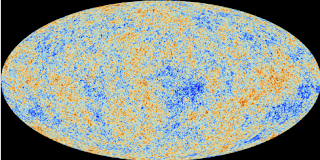Death Scream of a Dying Star
On a dark, gloomy night, a bunch of astronomers sitting in Zwicky Transient Facility in California noticed a rather uncanny event. Earlier this February, in the relatively calm sky, they descried a bright hot source roughly around 30,000 degrees celsius emitting intense X-ray, optical, and Radio signals.
Named AT 2022cmc, It is the brightest TDE observed to date. The findings published in Nature Astronomy indicate that these signals are jet-like matter coming from a supermassive black hole. And out of luck, these signals have directly been hitting our little planet, giving us a glimpse of terrifyingly beautiful sights from deep space.So What exactly it means to us? Is it a threat? A menace? Or a revolutionary discovery? Well, it's none of these as of now. According to astronomers, as the black hole began devouring the star, it released a relativistic jet aimed right at us, causing what's known as 'Dopplers boosting.' This process made the tidal disruption brighter than it would have been otherwise. Only the fourth TDE has reached us in the form of Dopplers boosting. But as we are witnessing more and more tidal disruption events, it deepens our understanding of black holes, their general behavior, and dynamics.
Tidal Disruption Event
A TDE is an occurrence that occurs when a star gets torn apart by spaghettification. When a star gets reasonably close to a supermassive black hole, it is subjected to the tidal force that releases the astrophysical jet(Ionized matter emitted as the beam from the axis). These Astrophysical jet produce radiation in the form of GRB, ultraviolet, X-ray, and infrared radiation.
sourceThe idea of TDE was first hypothesized by Dr. Jean-Pierre Luminet and Dr. Brandon Carter in 1982, which later on was verified by observation of radiation emitted by NGC 5905 and NGC 6021 in 1990. Since then, a total of 98 such incidences have been observed, and these have been one of our primary sources for understanding black holes.
Stay tuned to our blog for updates on all things astronomy.
-Sanskar (MS21234)




Comments
Post a Comment